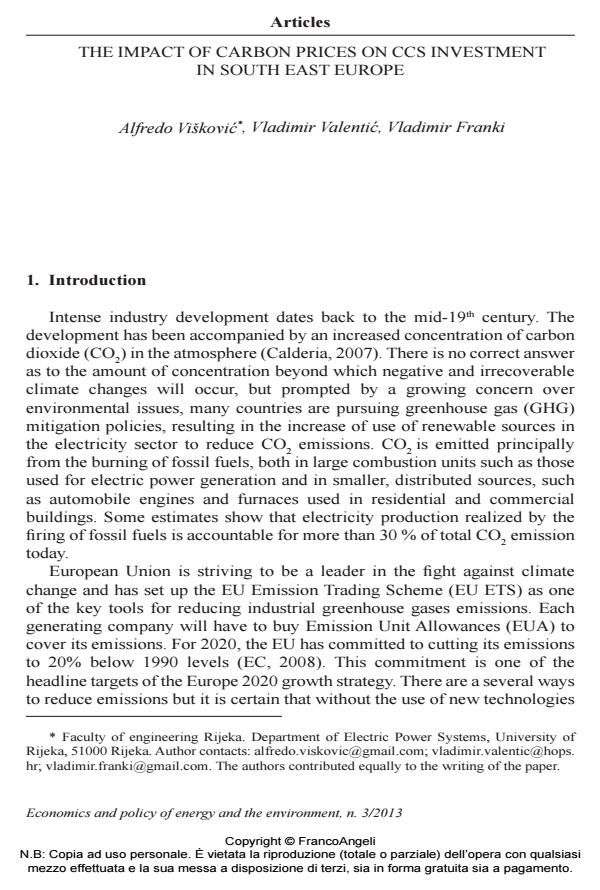The impac t of carbon prices on CCS investment in South East Europe
Titolo Rivista ECONOMICS AND POLICY OF ENERGY AND THE ENVIRONMENT
Autori/Curatori Alfredo Viskovic, Vladimir Valentic, Vladimir Franki
Anno di pubblicazione 2014 Fascicolo 2013/3
Lingua Inglese Numero pagine 30 P. 91-120 Dimensione file 952 KB
DOI 10.3280/EFE2013-003004
Il DOI è il codice a barre della proprietà intellettuale: per saperne di più
clicca qui
Qui sotto puoi vedere in anteprima la prima pagina di questo articolo.
Se questo articolo ti interessa, lo puoi acquistare (e scaricare in formato pdf) seguendo le facili indicazioni per acquistare il download credit. Acquista Download Credits per scaricare questo Articolo in formato PDF

FrancoAngeli è membro della Publishers International Linking Association, Inc (PILA)associazione indipendente e non profit per facilitare (attraverso i servizi tecnologici implementati da CrossRef.org) l’accesso degli studiosi ai contenuti digitali nelle pubblicazioni professionali e scientifiche
The aim of this paper is to analyze the feasibility of a new entrant power plant based on coal with an installed Carbon Capture and Storage (CCS) system. The plant will be analysed as an Independent Power Producer (IPP) based in Croatia and therefore a part of the South East European Regional Electricity Market (SEE REM) and a member of EU Emission Trading Scheme (EU ETS) obligated to pay for its emissions through Emission Unit Allowances (EUA). Long Run Marginal Cost (LRMC) of the plant will be calculated and certain sensitivities included. By using a market simulator of the region and implementing the model of the plant in question, the performance of the power plant on the electricity market is evaluated and the influences of different emission prices are analyzed. The research results in a prediction of the price of EUA at which a CCS coal-fired power plant becomes economically justified.
Parole chiave:Carbon Capture and Storage, Independent Power Producer, Emission Trading Scheme, Emission Unit Allowances, Coal Power Plant, South East European Regional Electricity Market
Jel codes:D24
Alfredo Viskovic, Vladimir Valentic, Vladimir Franki, The impac t of carbon prices on CCS investment in South East Europe in "ECONOMICS AND POLICY OF ENERGY AND THE ENVIRONMENT" 3/2013, pp 91-120, DOI: 10.3280/EFE2013-003004